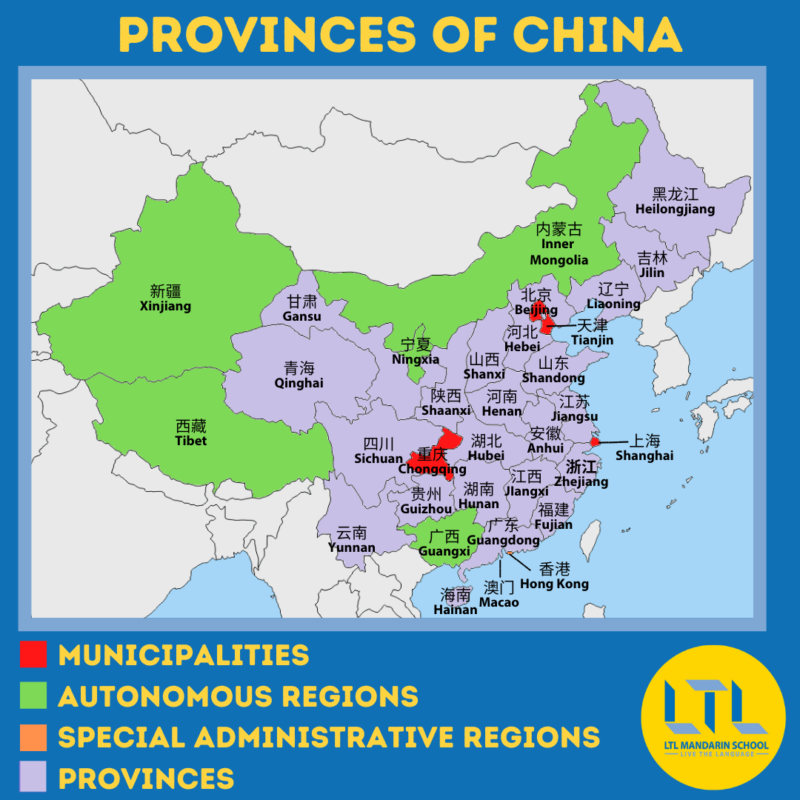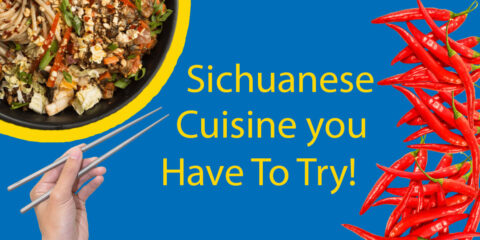The Sizzling Truth Behind Spicy Sichuan Hotpot 🍲🌶️
Spicy Sichuan Hotpot 🌶 Spice Up Your Tastebuds with Our Ultimate Guide to this Sichuanese Classic
Welcome to the sizzling world of spicy Sichuan hotpot!
You’ve probably heard of this famous culinary delight. If you’ve been to China, have Chinese friends or watch any Chinese series and dramas, you’ll have heard of hotpot and it’s links to Sichuan.
So now, it’s time to learn all about it!
Grab your chopsticks and get ready to embark on a culinary adventure like no other, where we explore the origins of Sichuan hotpot, the infamous Sichuan chilli and the lesser-known but equally delicious other options Sichuan has to offer!
Spicy Sichuan Hotpot: What is Hotpot?
Spicy Sichuan Hotpot: The Food History of Sichuan
Spicy Sichuan Hotpot: Where Does the Sichuan Chilli Come From?
Spicy Sichuan Hotpot: Where is the Best Sichuan Hotpot?
Spicy Sichuan Hotpot: Is Sichuan Food Just Hotpot?
Spicy Sichuan Hotpot: What Other Food Can we Find in Sichuan?
Spicy Sichuan Hotpot: FAQ’s
What Is Hotpot?

Hot pot 火锅 (Huǒguō), is a dish or cooking method that comes from China, popular in group settings but also available for individuals.
The process requires one or more steaming soupy broths (you continually heat it throughout the meal) and lots of raw ingredients to be cooked by the participants.
Ingredients vary from meats, vegetables, noodles and cooked side dishes to accompany the main meal.
Typically, you will also mix your own sauce to dip the finished, cooked ingredients into, to add a little extra flavour!
This is not to be mistaken for the popular ‘hotpot’ dish in the UK – a cooked stew of mixed ingredients.
The key difference is that hotpot is delivered raw and you can decide how long to cook each ingredient.

Many hotpot restaurants exist all over the country offering specialities – you can find seafood hotpot, beef hotpot or even hotpot restaurants that will specialise in the local ingredients.
Equally, there are super famous franchises that rule supreme – if you haven’t heard of any, here is a strong contender for most famous hotpot restaurant.
There are clear rules of what ingredients to choose, the order you should cook in, what sauce is suitable and how to finish the meal. If you need to be better acquainted, check out or blog post for a more hotpot specific breakdown.
The Food History of Sichuan
At its base level, Sichuanese food is spicy. It’s known internationally for it.
Just go online to any international ingredient seller and you can find the ‘Sichuan peppercorn’.
Sichuan is an extremely hot and humid landlocked province in south west China.
For thousands of years, it was popular nationally for its rich agriculture.

The hot climate combined with the Sichuan basin allows it to grow surplus vegetables and fresh ingredients and the landscapes relative isolation keeps produce fresh from interference.
As a result of the rich land, continuous waves of migration have passed through the province, adapting habits and leaving behind new culinary customs; vegetarianism, spice and multiple cooking techniques.
Sichuan cuisine dates all the way back to Qin and Han dynasties (221BC -220AD), where the dishes first became recognised under a distinct regional style.
This style stabilised for around 800 years and many Sichuan style restaurants in what is now Hangzhou deliver dishes in the Southern Song dynasty style.
However, the dishes available today are so different from the past that it could be argued modern Sichuan dishes are a totally different cuisine. Initially food was sweet to match local taste palettes, but over time, dishes developed into more pungent flavours.
The dishes continue to grow and incorporate new flavours by external influences to create the spicy masterpieces we see today, especially by the unique preparation and sauces used in the hotpot.
The basic meats are sliced differently and the recommended sauce to accompany the ingredients is simply sesame oil, minced garlic, cilantro, green onion and chilli paste.
If you’re planning to visit anywhere in Sichuan – and we recommend you do – you might need some help keeping food more mild. Don’t worry, we’re here to help. In order of spice level (from none to the most), see our introductory guide to spice levels below.
| Chinese (Hanzi & Pinyin) | English |
|---|---|
| 不辣 bù là | no spice |
| 微辣 wēi là | mild spice |
| 中辣 zhōng là | medium spice |
| 辣 là | spicy |
| 重辣 zhòng là | very spicy |
| 特辣 tè là | extremely spicy |
Where Does the Sichuan Chilli Pepper Come From?
During the late Qing dynasty, around the 19th century, Sichuan started to develop the spicy flavours we know it for today.
Despite its spicy reputation though, Sichuan is only responsible for growing less than 10 percent of their dried chilis and only about half of their fresh chilis”.
Most of their chillis actually come from other provinces.

The chilli was introduced to China in the 17th century from South American countries via Portuguese maritime trade routes, but it has only truly been adopted into the cuisine in the last 100 years.
It was originally known as a the ‘foreign pepper’ and seen as a food of the poor.
This spicy ingredient climbed up the social ladder in recent years though and enjoys great popularity amongst locals and expats now.
It is often mixed in with the regions local pepper known affectionately as “prickly ash’, causing real challenges for those who are shy with spice.

The love of spicy food in the western province is often attributed to the hot weather because its believed that eating hot food reduces internal dampness.
The most famous dishes to Sichuan are its spicy hotpots and soups which originated in the Qing dynasty.
DID YOU KNOW – Hotpot actually originated in Mongolia though.
The use of these Sichuan chilli’s often mean the local hotpot is known as the ‘málà hotpot’. Málà (麻辣) means spicy and a numbing sensation – inevitable when you have so many chillis in one dish. 🌶️🌶️

Provinces of China // The Complete Guide to China’s 34 Divisions
China’s big, we know that much, but how is it broken down into smaller parts? How many are there? Here’s our handy guide to all the provinces of China.
Where is the Best Sichuan Hotpot?
So you’re probably at a foaming-at-the-mouth-level of ravenous by now, and we who can blame you? Sichuan hotpot is 非常好吃 (extremely delicious!)
But you’re not here to waste your time, you’re after the best of the best.
As with most things, the answer is pretty subjective.
Depending on who you ask, you’ll probably get one of three answers:
1. Long Sen Yuan Hotpot – this restaurant lets the food (and its 18 soup bases!) do the talking. It’s not flashy, but the hotpot here is so good, it earned the restaurant a Michelin Star!
2. Chengdu Huangcheng Laoma – this restaurant has a highend feel to it and you’ll have live entertainmentin the form of Sichuan opera to accompany your meal. A little on the pricey side, but worth it!
3. Shu Jiuxiang Hotpot – a bustling restaurant that offers an authentic Sichuan hotpot experience, where you can get a hotpot divided into 9 sections!
Is Sichuan Food Just Hotpot?
Short answer – no.
With it’s world-renowned spicy hotpot, you might think this is the only dish the province has to offer, but this isn’t so. The author Tang Zhen Chang likened the hidden complexities of the cuisine to the Sichuan opera.

He compared the two styles of spice the region specialises in; one strong and pungent, the other light and soft, and explained that the phenomenon of contrasting styles in Sichuan Drama mimics the contrast in the local cuisine.
If we try to label one single dish or ingredient as Sichuan Cuisine, it demonstrates ignorance of the nature of society.
If spice is truly the only element of Sichuan cuisine, how can we explain why Sichuan cuisine is enjoyed globally, especially in countries that shy away from spicy food.
What Other Food Can We Find In Sichuan?
Sichuanese cuisine is diverse and we can divide it into four branches:
- Chongqing style
- Chengdu style
- Zigong style
- Buddhist vegetarian style
It also has an additional 23 recognised flavours, which are divided up into their levels of saltiness, spiciness, sweetness and sourness. If anything, Sichuan actually has far too many core ingredients.
Citizens in the province, especially in the city of Chengdu are known as big foodies, and have won the award for being the happiest city in China multiple times.
Many people believe this is because of it’s food driven culture and snacks.
Sichuan is also famous for its different cooking methods, as one dish will typically use multiple techniques. These have come from both northern and eastern influences over centuries.
Often, we will see vegetables deep-fried first, then stir-fried with a sauce.
Alternatively, we can deep fry pieces of meat and then braise them.
These methods provide richness to the final recipe alongside varying textures and strong flavours that can’t be found elsewhere.
Through the many external influences and the growth of its mass population (Chongqing has the greatest population in China), it is unsurprising that the techniques used in cooking traditional Sichuan dishes continue to develop and grow over time.
Today, the most used techniques include stir frying, simmering, deep frying, boiling, smoking, sautéing, slow red cooking/flavour potting, steaming, roasting and pickling.
As you’ll have seen, spicy Sichuan hotpot is an identifying dish of the province, but it is by no means the only dish.
The core chilli pepper isn’t even native to the area!
If your mouth has been non-stop watering throughout this blog, it might be time for you to consider visiting.
If you’re not aware, we do have a school and homestay options in Chengdu…
Spicy Sichuanese Hotpot – FAQ’s
Does hotpot come from China?
No, it originates from Mongolia.
Does Sichuan have popular dishes other than hotpot?
More than you can imagine!
Check out our post on some of the popular street food you can find.
Alternatively you can discover our top 20 Sichuanese dishes here!
Where does the Sichuan chilli originate from?
South America! It was introduced as a result of Portuguese maritime trade routes.
What’s the difference between Szechuan and Sichuan?
Nothing.
Szechuan is the Wade and Giles (English romanisation) of the Chinese word.
Both refer to the same location.
Is Sichuan cuisine very spicy?
Not all of the dishes use spice but the spicy dishes are VERY mouth-watering.
You’ve been warned.
Want more from LTL?
If you wish to hear more from LTL Mandarin School why not join our mailing list? We give plenty of handy information on learning Chinese, useful apps to learn the language and everything going on at our LTL schools!
Sign up below and become part of our ever-growing community!
BONUS || Want to study Chinese with us in Chengdu? Why not check out our group courses or individual Chinese classes.

 Hi, my name is Sabatino. I am from Italy and I am a Student Advisor at LTL. Fancy coming to study with us in China?
Hi, my name is Sabatino. I am from Italy and I am a Student Advisor at LTL. Fancy coming to study with us in China? Hi, my name is Mojca. I am from Slovenia in Europe and I work as a student advisor at our Chengdu school.
Hi, my name is Mojca. I am from Slovenia in Europe and I work as a student advisor at our Chengdu school.

